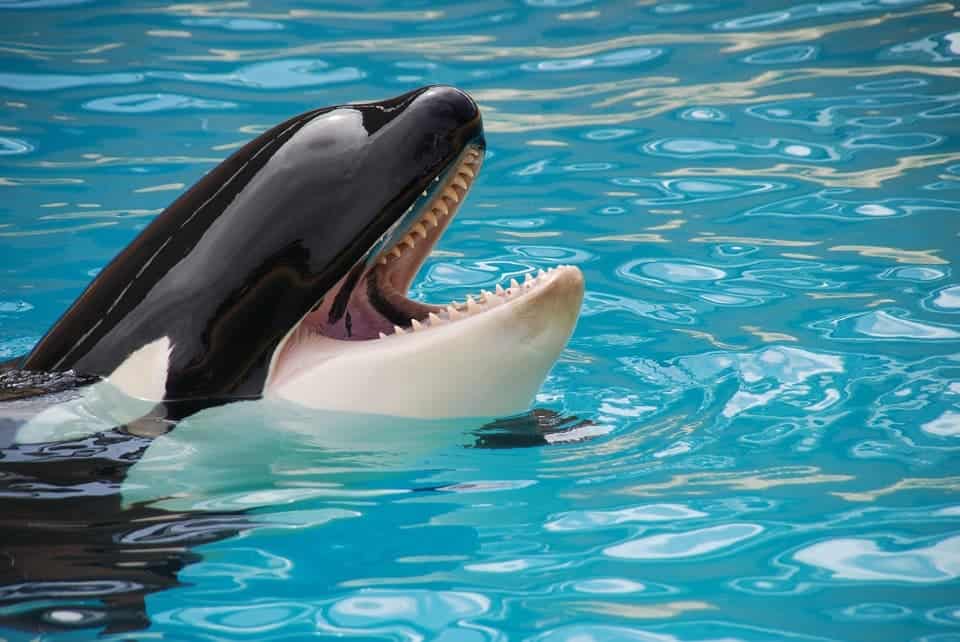New research found that orcas (Orcinus orca) astoundingly imitate human speech, conveying words such as “hello”, “bye bye” or “one, two.” They do so in their own way, in a distinct, high pitched call.

Orcas are phenomenally intelligent marine mammals which interact with peers in a complex social environment. They travel in close-knit groups called pods, usually comprised of 5-30 individuals, although occasionally some pods can number over 100 orcas. The toothed whales, also known as a “killer whales” (they actually belong to the dolphin family), are thought to have a complex form of communication with different dialects (slightly different language) from one pod to another.
Previously, researchers found that the creatures are able to imitate the movements and behaviors of other orcas. Anecdotal reports suggested that they are also capable of mimicking sounds from bottlenose dolphins and sea lions. But these very clever animals are even more impressive than we thought.
Take Wikie, for instance, a killer whale which is able to produce human sounds such as ” “hello”, “Amy”, “ah ha”, “one, two” and “bye bye”. Researchers at the University of At. Andrews and the University of Vienna trained the 14-year-old female at the Marineland aquarium in Antibes, France, in order to probe the lengths of the orca’s vocal repertoire. Here’s what they sound like.
Essentially, they showed that orcas are capable of mimicking sounds they had never heard before, and learn fast, too. All of the novel noises, including those belonging to other orcas, were mimicked within 17 trials. In fact, two human utterances and all of the human-produced orca sounds were managed on the first attempt.
“You cannot pick a word that is very complicated because then I think you are asking too much – we wanted things that were short but were also distinctive,” said Josep Call, professor in evolutionary origins of mind at the University of St Andrews and study co-author.
The scientists compared the original sounds with the help of a computer algorithm called dynamic time warping (DTW). The match was also confirmed by blindfolded judges who had to listen to original and orca-produced audio samples and then decide whether the pairs sounded similar. Wikie successfully copied all of the sounds, the researchers found, though some took longer to learn than others.
The rate of successful “pronunciation” also varied. Wikie could utter “hello” 55 percent of the time, while her “bye-bye” was correct only 21 percent of the time, suggesting some sounds are harder than others to reproduce for orcas.
There aren’t that many animals capable of mimicking human speech, which requires not only a certain vocal apparatus but also specialized neural pathways. Examples include orangutans, dolphins, and, of course, parrots.
But all of these animals have somewhat similar morphology, which is why the orca feat is so much more impressive. Despite possessing a strikingly different morphology from humans, it can still produce sounds that are similar to those produced by another species, in this case, like us.
However, the findings published in the Proceedings of the Royal Society B: Biological Sciences do not imply that the killer whales were also capable of discerning the meaning of the sounds they mimicked. There is no evidence that suggests this, in any case.
Call and colleagues believe that this astute ability to learn sounds by vocal imitation lies at the very core of the orca dialects observed in the wild. More research might confirm this hunch. In any event, the findings show that the intricacy of killer whale communication reflects their complex social structure. There might be a causal link between the two.


